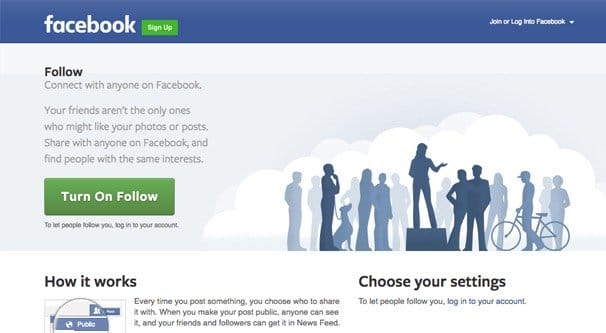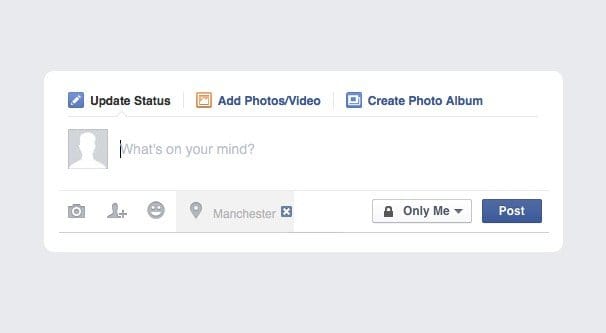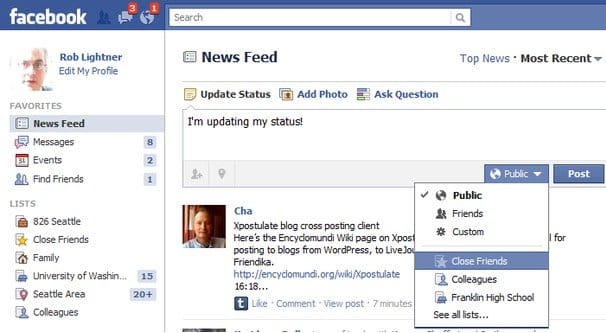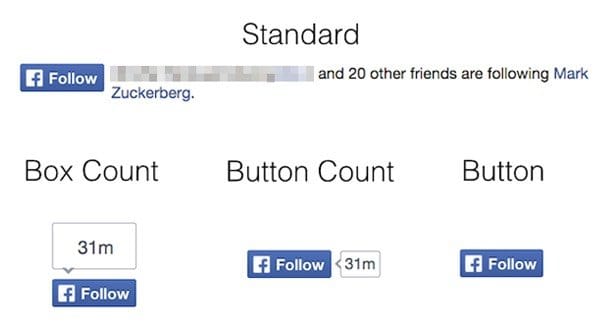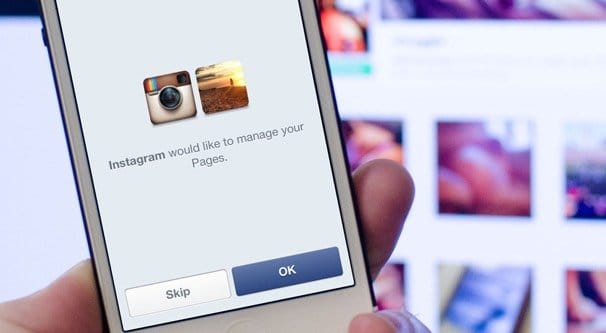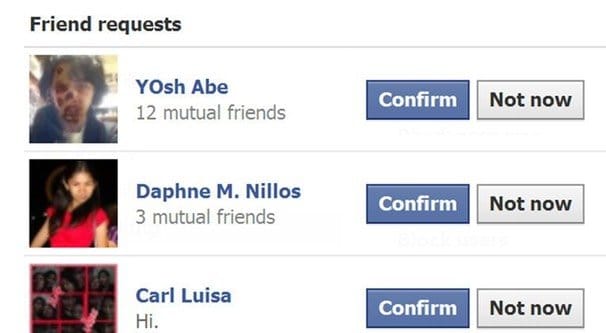 Written by ContentPowered.com
Written by ContentPowered.com
Facebook isn’t a fan of people using personal profiles for marketing. There was a minor scandal about it earlier this year, when they flagged a lot of prolific posters as attempting to run businesses from personal profiles, and tried to get them to make pages instead.
However, by the same token, they acknowledge that not everyone needs a business page for themselves. You see this primarily in verification. A lot of individuals in prominent positions have verified personal profiles. Journalists, entrepreneurs, CEOs; these people are noteworthy enough to warrant verification, but don’t need a business page for their personal presence. Many of them already have business pages for their actual businesses as well, so they prove they know how to use the system as it is intended to operate.
However, just because you’ve chosen to use a personal profile rather than a business page doesn’t mean you shouldn’t be able to market and grow yourself. After all, it’s called a “personal brand” for a reason. That’s what this list is all about; methods you can use to grow a personal profile without tripping the flags Facebook uses to railroad you into a business page.
1: Enable Profile Follows
There was a time when only verified users were able to be followed, but now the feature is available to anyone. Simply go into your settings and click the “public posts” option.
There you can set who can see your posts and who can follow your profile. This allows users to create a one-sided relationship on Facebook, similar to a page follow or a Twitter follow. It also automatically happens when someone sends you a friend request. Even if you deny or ignore the request, they stay following you, so you can build an audience that way.
2: Tag People
If you’re concerned about growing a personal brand, you’re probably attending events on a local and national scale. Whenever you go to an event, take pictures and upload those pictures to Facebook. Then, when you have the chance, tag the people who are in the picture with you. This gives you a connection to them that goes beyond the in-person meeting.
3: Tag Locations
Just like tagging people, you can tag your location when you upload a photo.
This give you additional geolocation information, it helps people who are in those locations see and comment on your content, and it helps you network with specific venues and businesses if they’re available to be tagged. Remember, every bit of networking helps.
4: Find and Post in Groups
Groups are one area where a personal profile has a strong advantage over a brand. People are skeptical of brand advertising anywhere near groups, but people posting valuable content fly under the radar because it’s assumed that you’re more aiming to help than to advertise.
The key is to do just that, by the way; post valuable content under the guise of helping out your fellow group members. As long as it’s actually valuable and you stay on topic, you’re not going to trip warning flags. Groups are full of opportunities.
5: Engage with Influencers
Finding influencers isn’t difficult; they’re the people who have some sway in your chosen industry, whatever that may be. Your task, then, is to follow them and engage with what they say. There’s no difference between doing this as a brand and doing this as a personal profile, so simply search for guides on influencer marketing and you’re good to go.
As usual, the core focus of this engagement should be value. Be insightful, be thoughtful, be detailed, and provoke conversation. This is how you get noticed and how you get exposure. If not from the influencer themselves, then from their audience.
6: Post Engaging Content
On Facebook, content is what gets you everywhere. Post more content. Remember how EdgeRank works? More people see your posts when they’ve seen your posts in the past, when they’ve engaged with you, and when the posts are newer. They also see your posts more when they’re some kind of multimedia, like a video or image, than if they’re just text or a link. Even links are better than pure text, generally. The moral of the story, though, is to post at least once or twice every day, with something valuable and thought-provoking, and encourage comments on the content you post. Thankfully, personal profiles have a lot more leeway about casual posts and conversation than brands get.
7: Respond to Engagement from Users
One of the keys to successful growth as a brand page is to engage with your users, but it’s even more important – and easier – with a personal profile. Engagement and two-way conversation is the primary vector you have for encouraging your existing followers to share your posts, and for getting them to see more of your posts in the future.
Fostering discussion is the number one focus of your posting and responding on Facebook, and it should be where the bulk of your time is spent. You shouldn’t even need a strategy for this, just have conversations and it will work out for you.
8: Tag Yourself in Photos
Up at the top I told you to tag other people in your photos, to establish that connection and get other people into your page. Well, it works the same way in reverse as well. By tagging yourself in the photos of others, you tap into both their audience and your own. You can see the comments made on the photos and can respond to them, and your audience can see the photos and comments to make their own responses. You draw other people into your fold.
9: Create Custom Feeds
A custom friends list allows you to set permissions and visibility options for specific groups of people. This is very useful for segmenting parts of your audience. For example, you can create a list of people you consider to be influencers and, later, can share specific posts to only those people.
It’s easy to do, too; simply hover over the “more” underneath friends on your left sidebar, and click to create a list. You can name the list and add people as you like.
10: Pay Attention to Marketing Techniques
In this case, I mean generalized marketing strategies that brands have to monitor. For example, you might want to analyze your audience for their basic demographics and tailor your posts a little bit in their direction. You don’t have to be overt about it – and you won’t have the specific data to do so – but you can lean in to bias. You can also pay attention to the active hours of your audience and time your posts to be most visible to them then.
11: Post More Media
I’ve already mentioned it, but it bears repeating; media is given preferential treatment by Facebook’s algorithm. There are a lot of factors that go in to who sees your posts, but media posts have greater weight, and so do posts by friends rather than brand pages. You have this advantage over businesses, which is counteracted by the fact that businesses can spend money on ads and you can’t.
12: Embed a Follow Button Somewhere
On the page about follows that I linked all the way up in the first section, there’s a bit at the bottom about a follow button. It’s like the Facebook Like button that brands get, but it’s tailored for personal profiles.
In other respects, it works the same way. I recommend adding it to various venues you have, such as your website or personal blog. It’s harder to add to other locations that don’t allow scripts, but you can just link to your personal profile in those cases.
13: Avoid Breaking Business-Only Rules
These rules are fickle and come down entirely to how big you get and whether or not Facebook notices you. Essentially, though, they mean you have to avoid doing anything that Facebook normally restricts to business pages only. Contests are one major example of this; Facebook doesn’t like it when personal profiles run contests, because profiles are much easier to set up and run than brand pages. It’s easier to spam fake contests using them. Direct marketing and overly advertorial speech are other similar issues that, in sufficient volume, can attract Facebook’s notice. A little marketing now and then is fine, but too much of it can flag your account.
14: Run Paid Ads from a Brand Page
If you do happen to have a brand page, you can use it to run ads to just about any URL you want, and that includes a personal website or even your personal page itself. They won’t be quite as effective as straight, on-brand ads, but they can still be quite beneficial to your personal profile in the long run.
15: Cross Post with Instagram
Instagram and Facebook are closely linked, since they’re both owned by Facebook, and that means you can interlink and post across platforms.
Generally, this means bringing the highly engaging media content from Instagram over to the Facebook side of things. The trick is, you need to make it less obvious that you’re doing it automatically, if you are; Facebook users don’t like hashtags, but Instagram virtually requires them. You can also include your Facebook link on your Instagram page, so people there can follow it back and follow you on Facebook.
16: Cross Post with Twitter
Twitter may not be as easily cross-linked as Instagram, but it’s still a great network to build your personal brand and to share content from one to the other. Again, make sure to minimize the number of hashtags you include, and feel free to expand on the points you make. The key is more consistency across platforms.
17: Promote Facebook in your Signature
By signature here I primarily mean your email signature, but I can also be referring to signatures on forum boards and even in comment sections, if you consider “signature” to be a very loose reference to any profile fields you control. Add in the link to your personal profile – customize the URL if you haven’t already – and allow people who like your content to investigate and follow you. You can also add a line promoting it; “I’m always open to new friends!”
18: Promote Facebook on your Business Card
Think of your business card as something similar to your email signature, only in person. You can’t really spout out a URL in person and expect anyone to remember it, so you can have it printed on your business card and hand it out. Your card can also have other means of contacting you, your website, and an indication of what it is you do and what brand you’re building.
19: Send More Friend Requests
Don’t be shy! You don’t have to wait for people to come to you. That’s one of the primary tools you have as a personal profile over a brand page; you can add as many people as you want.
Just go through and clear your pending invites every so often, so they aren’t clogging the system. There seems to be no maximum number of friends you can have, but there is a cap on the number of friend requests you can have pending at once.
20: Import Contact Lists
Contact lists from various resources, like your mailing list, your email address book, and your brand opt-in page, can all be used to import into Facebook and send requests for new friends. Even if only a small percentage of them agree and follow you, it’s still a great benefit.
